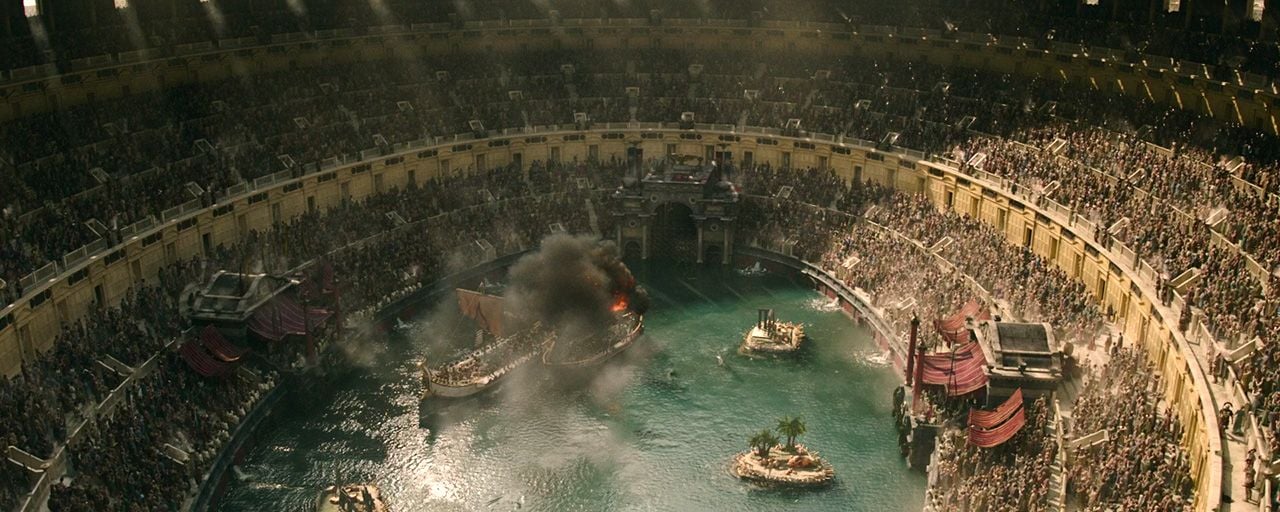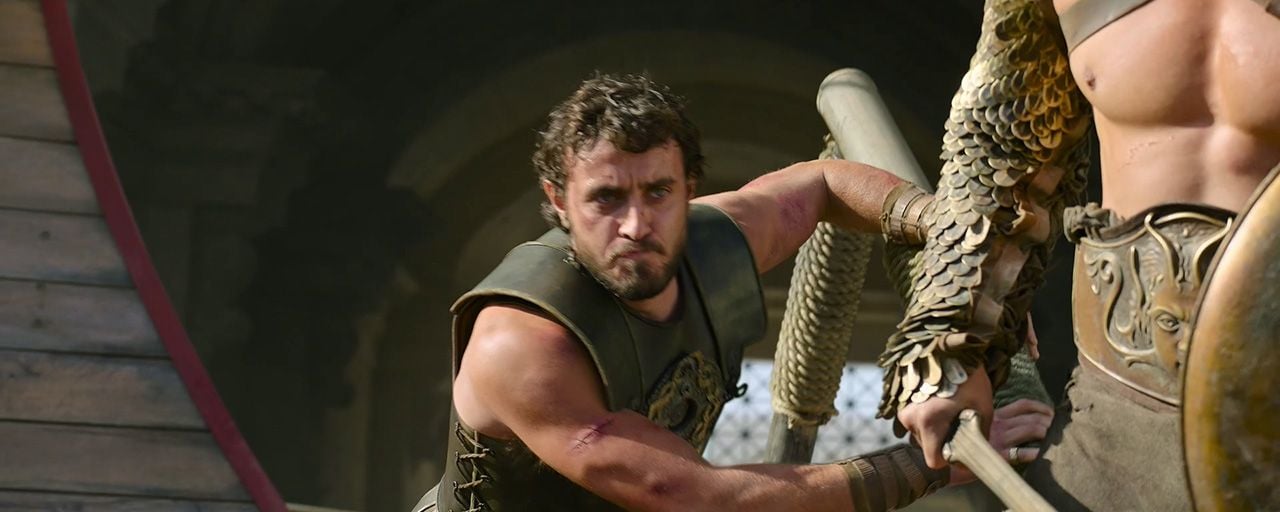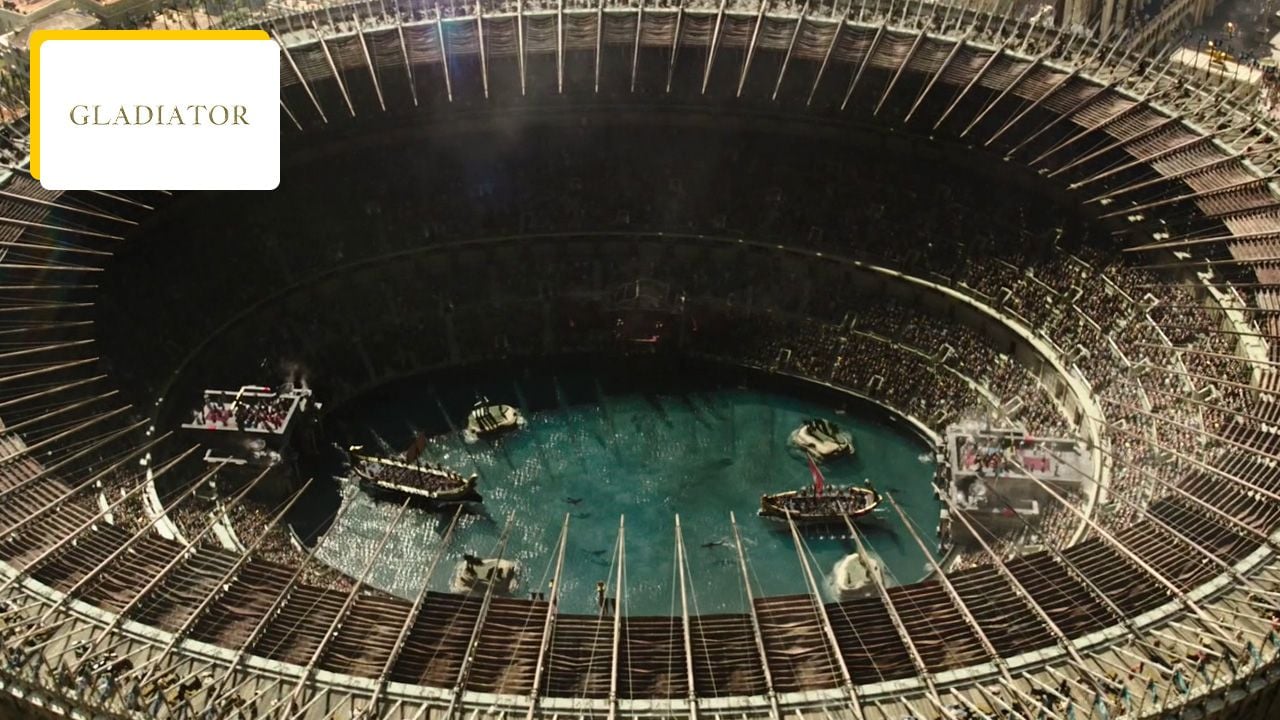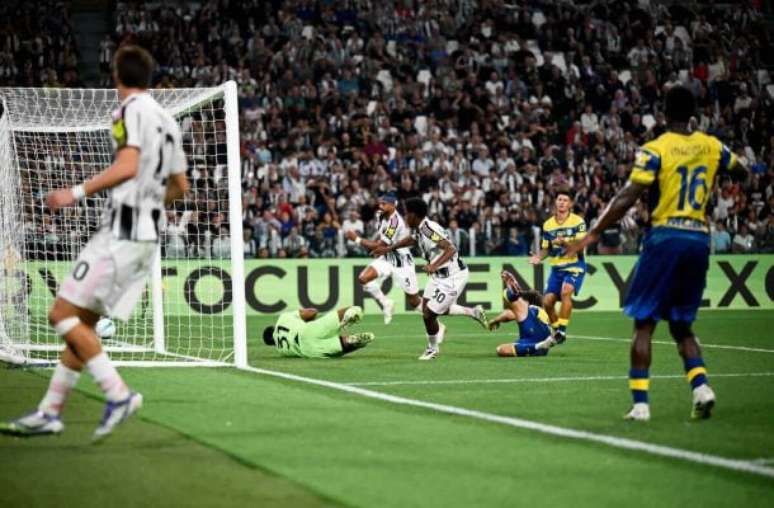24 years after Gladiator, his 5 Oscar winning film, Ridley Scott brings us a sequel with the sober title Gladiator II. Several years in the planning – this new installment without Russell Crowe, without the previous hero – takes place about twenty years later.
Sent to Africa by his mother Lucilla (Connie Nielsen) after the deaths of Maximus and Commodus (Joaquin Phoenix), Lucius, played by Paul Mescal, is forced into the Coliseum when his country is overrun by the tyrannical emperors who now rule Rome. iron fist With rage at heart and the future of the empire at stake, Lucius must look to his past to find the strength and honor to restore the glory of Rome to his people.
A more spectacular film that includes bloody battles with animals, each more impressive than the last, be it bloodthirsty baboons, an imposing rhinoceros or sharks released in an underwater arena. But did gladiators really face wild animals in the arena? What liberties did Ridley Scott take with reality?
Gladiators met wild animals
Gladiator fights date back to the 3rd century BC. Quickly, these battles were organized during the military victories associated with the Punic Wars and became a symbol.
As early as 202 BC, Roman soldiers landed in North Africa, a continent inhabited by wild animals. Lions, hippos, crocodiles and giraffes are imported for public entertainment or for use in the arena. Therefore, gladiators face other gladiators, but also wild animals. Those condemned to death were thrown to the lions.
Gladiator II
But what about sharks? When the first trailer for Gladiator II opens, we see the coliseum flooded for a naval battle and some sharks in the water.
Dr. Shady Bartsch, professor of classics at the University of Chicago, graduate of Princeton, Harvard, and Berkeley, and author of several books on ancient Rome, states. The Hollywood Reporter that Ridley Scott’s film is “Totally Hollywood and absurd”added: “I don’t think the Romans knew about sharks, although there were naval battles in the arena.“
Ridley Scott’s reaction to this criticism
American site Collider prompting Ridley Scott to react – who, as we know after the controversy over the historical accuracy of his recent biography of Napoleon, doesn’t really appreciate it when historians comment on his films. The latter defended his choice to include sharks in the Colosseum.

“You’re completely wrong. The Coliseum was indeed flooded and there were sea battles… Seriously, if we can build a Coliseum and flood it with water, catch some sharks in a net. It’s not the hardest thing. Of course they could do it.”
You are completely wrong!
Then the filmmaker elaborates “They were pretty small. They were only six or seven feet tall (Editor’s note: about 1.8 meters). When you can do what they could do . . .”
As well as angered by Napoleon’s criticism, Ridley Scott once again showed himself irritated by the criticism. Gladiator II. His epic combines historical truth and inventions, so much so that sometimes it is difficult to understand what is reality or pure fiction. But isn’t the most important thing that the film is a magnificent spectacle?
Was the Colosseum under water?
AlloCiné contacted Jérôme Fran, professor emeritus of ancient Roman history, who explains that the pools used to represent sea battles in the Colosseum were shallow and therefore could not hold as many sharks as Ridley Scott showed in his film. .
In Gladiator II, Lucius and the other gladiators must fight on galleries and be swallowed by sharks if they fall into the water.

“I don’t know what kind of sharks were in the Mediterranean at that time, they could have been big fish, I have no idea and I’m not going to get into that debate, but you should consider it. On the account, because the Coliseum was not very deep, there was not even three meters of water..
It was impossible to recreate a real naval battle in the Coliseum
We know that the Colosseum stage was only 80 by 50 meters, so it was impossible to recreate a real naval battle, except perhaps with scale models. It was also necessary to import boats, which were undoubtedly dismantled and assembled on site. In addition, the depth of the arena was not enough. So there had to be some adaptation to allow connected shows, compatible with other types of games, which explains why the water was not very deep.
It is believed that the Colosseum used scale models depicting warships with small crews. The show then consisted of a tug-of-war between two boats, and it appears that one of the two may have been equipped with a structure that would allow it to simulate a shipwreck. In fact, it was more of a gladiator fight on two boats. A complete naval battle reconstruction would certainly not have been possible in the Colosseum due to these limitations, especially the size.

But not much is known about the use of water in the Colosseum. We know it existed, these data show, but the exact reconstruction remains unclear. As for the crews, there were sailors, of course people belonging to the Imperial fleets, who were mobilized for these shows. Maybe prisoners of war or other types of convicts, but nothing else is known.”
Jerome France adds:On the other hand, there were great naumakia, or naval battles, in the basins. These ponds were developed and could cover tens of hectares. For example, we know that Augustus had a pool of almost 20 hectares built in the present-day Trastevere area of Rome, where the naval battle of Salamis was recreated. It was with real boats being maneuvered by crews and of course the community around.’
Gladiator II It is currently showing in cinemas.
Source: Allocine
Rose James is a Gossipify movie and series reviewer known for her in-depth analysis and unique perspective on the latest releases. With a background in film studies, she provides engaging and informative reviews, and keeps readers up to date with industry trends and emerging talents.







